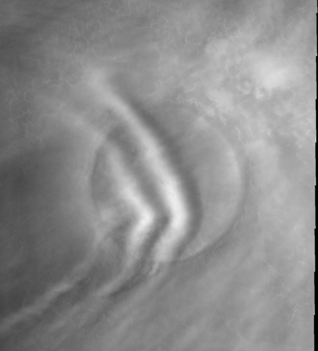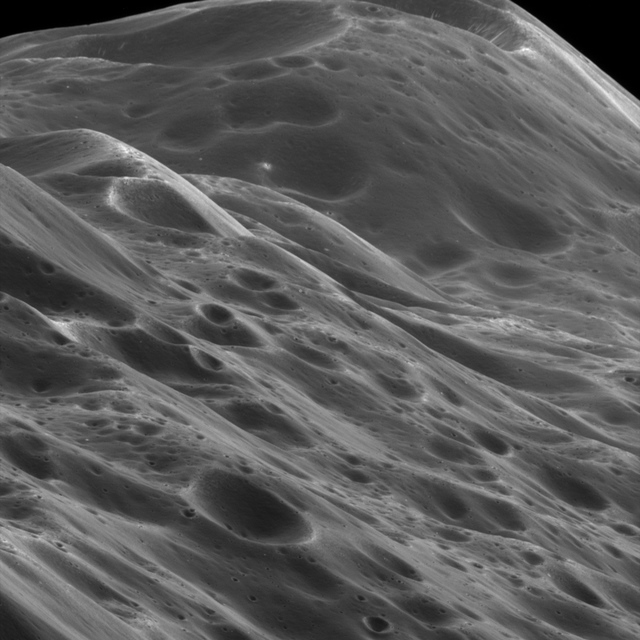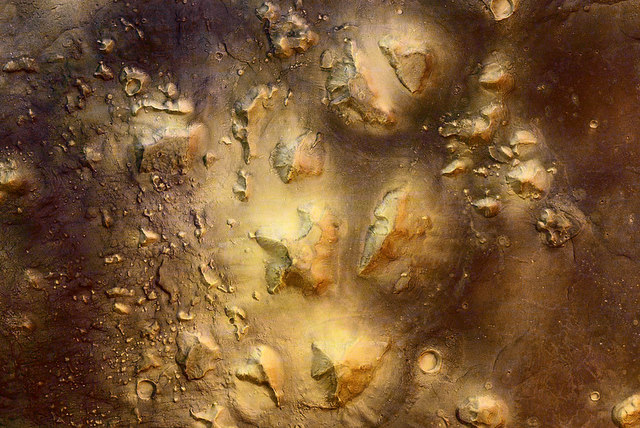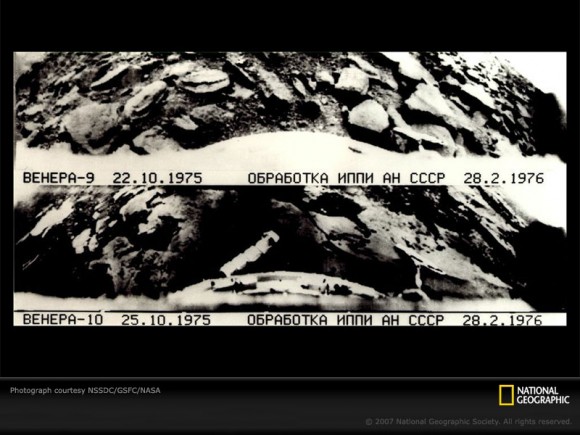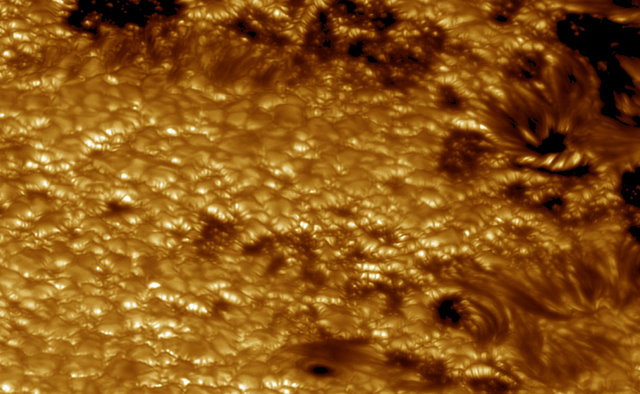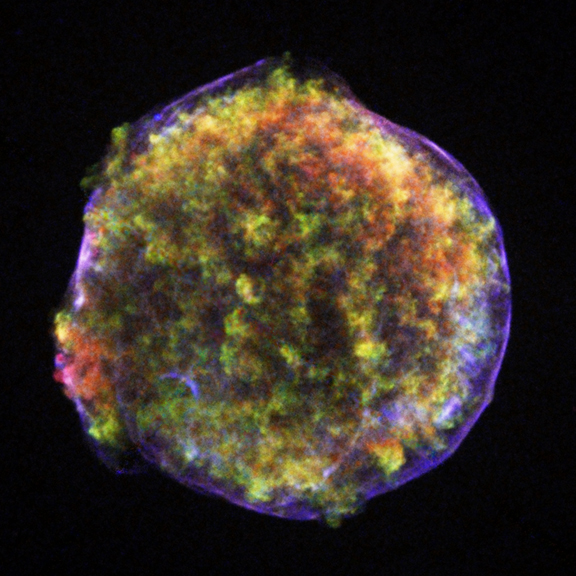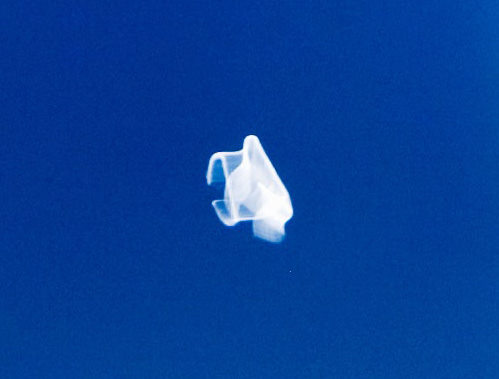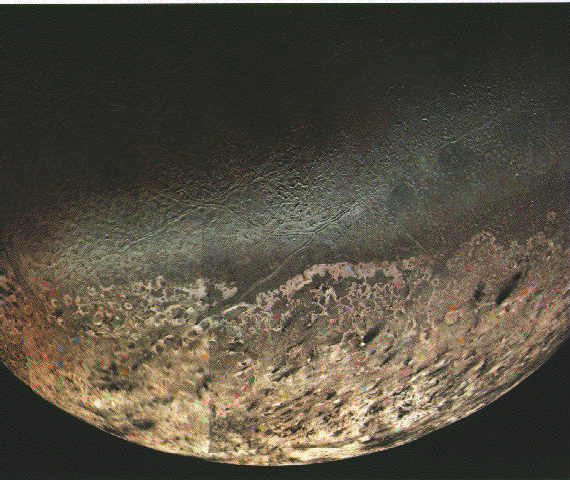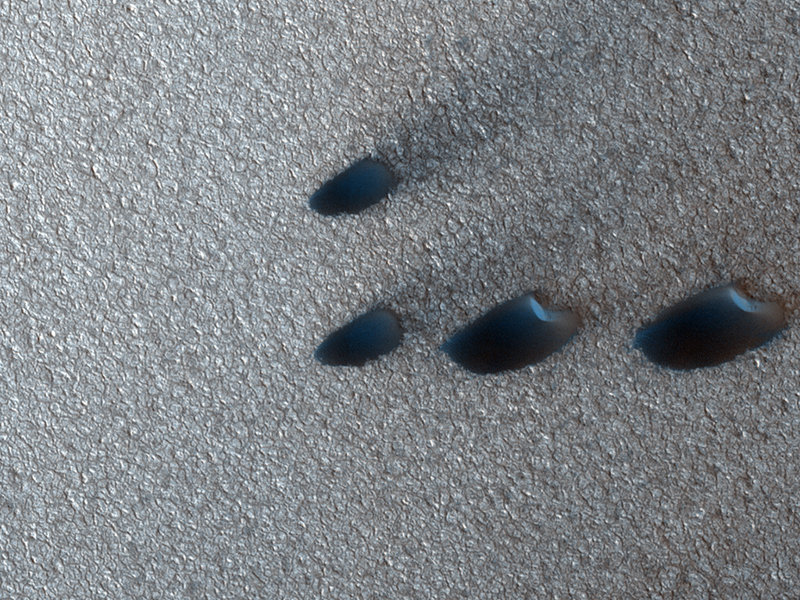Here’s your image for this week’s “Where In The Universe” challenge. Take a look and see if you can name where in the Universe this image is from, and also guess what exactly this image is — there are a few different features here — just what are they? Give yourself extra points if you can name the spacecraft responsible for the image. The image will be posted today, but we won’t reveal the answer until tomorrow. Post your guess in the comment section, and then check back tomorrow and see how you did. Good luck!
UPDATE (12/12): The answer has now been posted below. If you haven’t made your guess yet, no peeking before you do!!
This is an image of springtime clouds over a crater on Mars, taken by the Mars Odyssey Themis (Thermal Emission Imaging System). Here’s the link to the THEMIS page for more information.
Thanks for being more discreet in adding your guesses in the comment section (no one put any links this time!) The readers don’t have to name their sources! Thanks for playing, and I hope you’ll play again next week!

